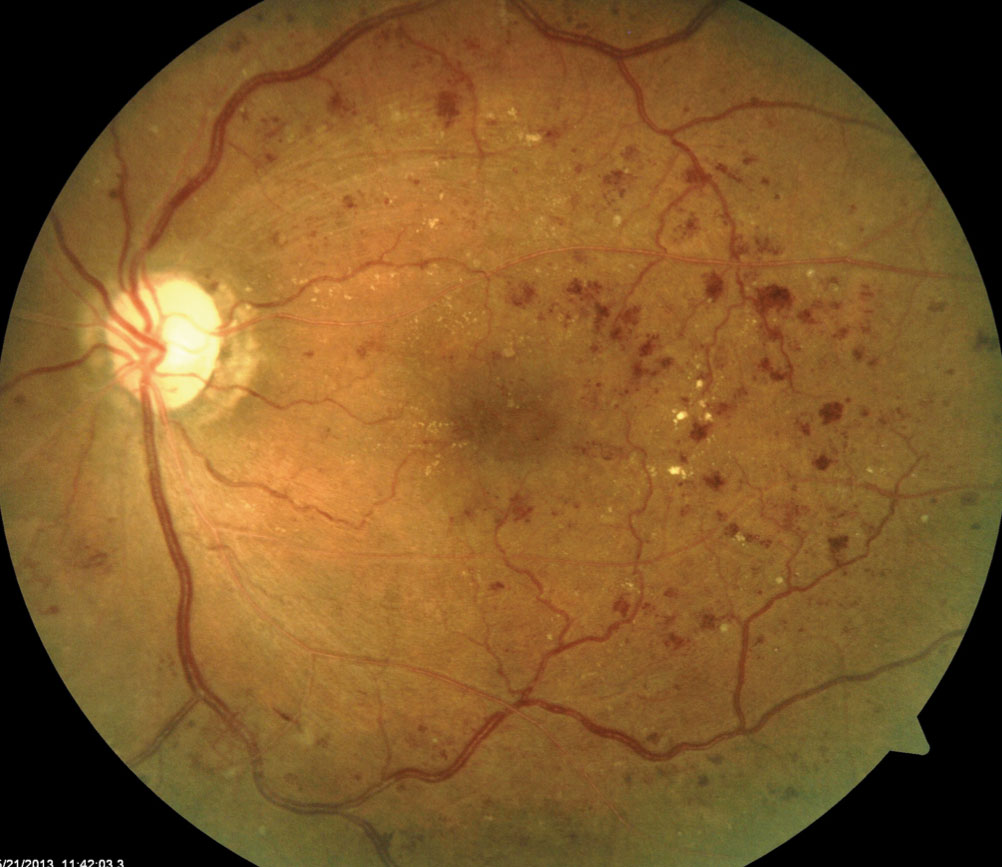 |
|
Adding a fish oil supplement or normal amount of fatty acids to one's diet, though controversial, could have the potential to reduce risk of diabetic retinopathy. Photo: Julie Torbit, OD. Click image to enlarge. |
A study recently confirmed the findings of a handful of others that have demonstrated a possible protective effect of marine polyunsaturated fatty acids (PUFAs), consumed through one’s diet, on the prevalence and progression of diabetic retinopathy (DR). Researchers looked at 17 years of diabetic patients’ records from the only eye practice in a Norwegian west coast island, where fish products are a readily available dietary staple. Compared with neighboring counties, the population had a relatively low prevalence of vision-threatening DR and visual impairment.
Study participants included 510 patients from the Norwegian island with either type 1 (n=50) or type 2 diabetes (n=460). Self-reported medication, diet supplements, HbA1c and fish consumption were all recorded. In the type 1 and type 2 groups, the median age was 44.5 and 66 years, respectively, and the median disease duration was 11.5 and eight years, respectively.
The researchers found a very low visual impairment rate among the studied population. No patient had a best-corrected visual acuity (BCVA) of worse than 0.3 (logMAR 0.48) due to DR, and 98% had a BCVA of at least 0.5 (logMAR 0.3) in the better-seeing eye. Less than 0.4% of patients had significant extraocular diabetic comorbidities.
“The observation of only 0.4% of severe extraocular microangiopathy as well as preserved best eye visual acuity indicates a generally low level of serious microvasculopathy, including retinopathy,” the authors of the study wrote. “In addition, timely medical and ophthalmological care in diabetes patients will effectively help to prevent visual and systemic impairment in one of the leading worldwide causes of blindness and associated morbidity.”
A study limitation: patients in the studied region with more severe DR may have been referred directly to the regional university eye clinic, and, therefore, the data of that population could not be included in the analysis. There were also confounding variables at play in this study, making it difficult to confirm a direct link between the consumption of PUFAs and a reduced prevalence and progression of DR.
Overall, these findings, along with evidence from previous studies, suggest that daily intake of fish or fish oils may provide minimal risk protection against diabetic microangiopathy and retinopathy. Inform your patients with diabetes who are at risk for DR that they could potentially benefit from consuming a normal amount of PUFAs each day either through their diet or supplementation.
| Alsbirk KE, Seland JH, Assmus A. Diabetic retinopathy and visual impairment in a Norwegian diabetic coast population with a high dietary intake of fish oils: an observational study. Acta Ophthalmol. September 2, 2021. [Epub ahead of print]. |

